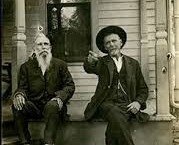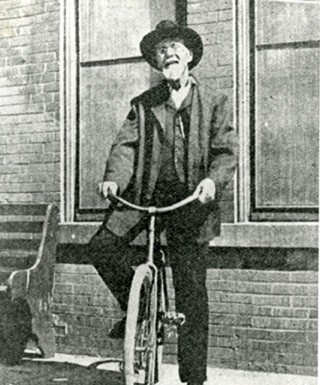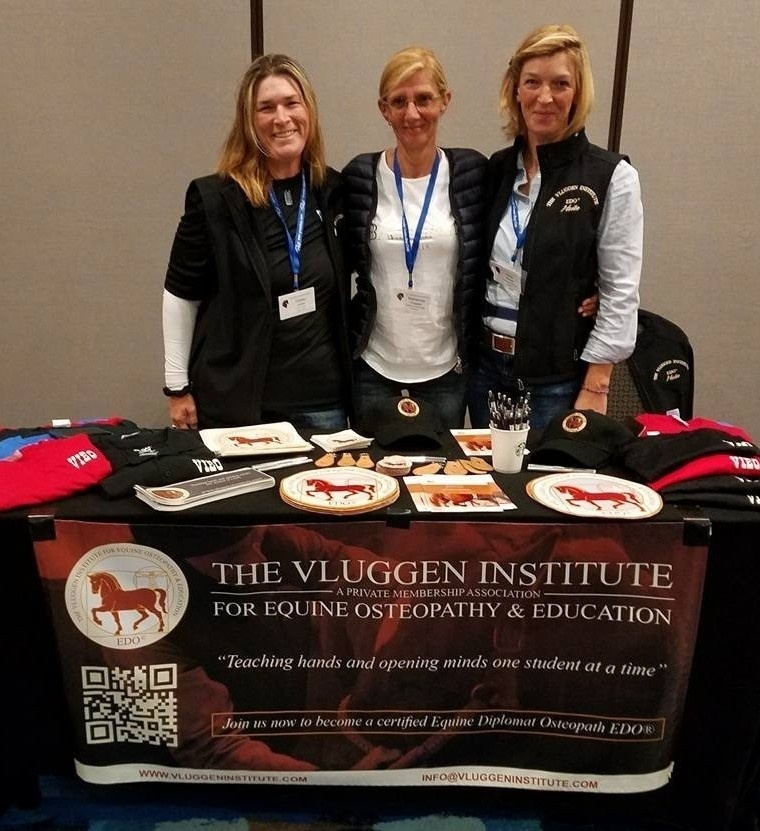What is Equine Osteopathy?
Equine Osteopathy is the specific application of the principles and standards developed in human osteopathy, translated, adapted and modified to the unique structure and physiology of the equine. Equine Osteopathy is a manual therapy that works successfully with veterinary medicine to aid horses in staying healthy even with the unnatural demands that are placed on them in their life with people.
In 1970, French veterinarian Dominique Giniaux began to employ osteopathic principles with horses and is considered the founder of equine osteopathy. Other veterinarians and osteopaths followed and began utilizing osteopathic concepts for animals both large and small.
By 2002, French osteopath Pascal Evrard had combined and further developed the early principles and techniques to a more structured and safer method.
Through collaboration with Janek Vluggen, DO, MRO, EDO, who brought his expertise in visceral osteopathic principles (in relation to the autonomic nervous system and craniosacral system) to the effort, the two osteopathy school classmates continued in developing equine osteopathy into an independent complementary specialization.
Osteopathy: Is it becoming a lost art?
By Julie Staub PT, EDO®, CMRP
Osteopathy is a name for a complex science that has existed for over 100 years. It is a treatment method that was founded by Andrew Taylor Still M.D. in 1892. Known as the “Father of Osteopathy”, one of his many definitions of osteopathy is as follows: “Osteopathy is the scientific knowledge of anatomy and physiology, applied through the trained and experienced hands of the therapist to help the suffering patient after strain, overstrain, shock, accident, mechanical disorders and wounds”.
There are several guiding principles that govern this science which can be applied to all sentient beings. Some of these principles include treating the whole body as a unified organism. This means that the body functions as a whole and that physical injuries to tissues will affect the mind and vice versa. Another guiding principle is form follows function. For example, if you roll a square block of wood on the pavement many times, it will eventually become rounded. This applies to our anatomy as well. If we carry a heavy load in our right arm day after day, it will eventually lead to a spine that is bent to the right and a shoulder blade that sits too low on our ribcage. This will cause problems with the shoulder and the spine. One of the most known principles in osteopathy is the arterial rule. This means, for example, that if we have an injury at our sacroiliac joint (between the pelvic bones) we will have compromised neurological, vascular, and lymphatic connections to the organs, joints, and tissues beyond that injury.
How does osteopathy differ from other kinds of treatment? Osteopathy is a method of treatment that looks at the 3 major systems of the body: the parietal system (joints, muscles, ligaments), the craniosacral system ( joints of the cranium, sacrum, and the membranous system around the brain and spinal cord), and the visceral system (organs and fascia that connect the organs to themselves and to the rest of the body). The body and its joints are seen differently in osteopathy vs. allopathic medicine. An osteopathic joint is one where two anatomic structures come together and motion takes place. With this in mind, the chief role an osteopath plays in restoring health is restoring mobility. In allopathic medicine, a joint consists of bone to bone contact with joint capsule, cartilage, and synovial tissue.
Osteopathy was developed on the premise that the body has within it all of the necessary ingredients to maintain health and recover from disease. There is an innate belief in the body as being self-developing, self -sustaining, self-adjusting, and self-propelling all within its own power. The energy source for healing is food not medicine (drugs). This is not the platform or philosophy of traditional allopathic medicine today. In today’s view of medicine, western trained practitioners look at symptoms and provide treatments that nullify or abate the symptoms rather than get to the root cause of disease. Patients are treated by rule rather than reason.
The application and success of osteopathy is dependent on the knowledge of anatomy and clinical experience of the osteopath. The more thorough the understanding of anatomy and how the body works, the more likely the osteopath will come to the exact cause of the lesion. Andrew Taylor Still never taught that all diseases were due to displacements of bony structure but that bony structure along with irritation of nerves, contraction of muscles, abuse of organs, etc could also bring about osteopathic lesions. Osteopathy can provide an exact method of treatment, which if properly applied, will enable the blood and tissues to administer nature’s perfect remedy, in the optimum dose, without side effects.
History of Equine Osteopathy
... From The Beginning
Who is A.T. Still?
Andrew Taylor Still was born on August 6, 1828, in a log cabin in Lee County, Virginia. The third of nine children born to Abram and Martha Still, young Andrew led a typical frontier boy's life, with plenty of hard work and intermittent schooling.
His first wife, Mary Vaughan, died in 1859 due to childbirth complications. In 1864 Still lost two of his own children and one adopted child to an epidemic of spinal meningitis; a month after the epidemic, the daughter born to his second wife, Mary Elvira Turner, died of pneumonia. His inability to save his family, coupled with his grim experiences as a Civil War doctor, led Still to reject most of what he had learned about medicine and search for new and better methods.


Still's explorations were grounded in the study of anatomy. Having grown up as a hunter and farmer, he already had a basic understanding of the structural relationships of bones, muscles, and organs, knowledge which he now extended through the study of human skeletons.
He became convinced that most diseases could be alleviated or cured without drugs. The key was to find and correct anatomical deviations that interfered with the free flow of blood and "nerve force" in the body.
It is impossible to say exactly what influences Still drew on as he shaped his new system of healing. He was a well-read man, deeply interested in the social and intellectual developments of his time, which undoubtedly helped shape his philosophy. His religious beliefs also affected his thinking about health and the human body.
Furthermore, there is evidence that Still knew about a number of alternative medical theories then in circulation -- magnetic healing, bonesetting, Grahamism, hydropathy, homeopathy, and eclecticism -- and that in his search for a new way of healing, he investigated several of these systems for himself. Most he rejected outright. From others, he retained and adapted -- consciously or unconsciously -- those elements which seemed to have some validity.
- Excerpt from The Museum of Osteopathic Medicine
Visit ATSU
Today...
With the untimely deaths of Pascal Evard in 2003 and Dr. Giniaux in 2004, Janek Vluggen has carried on the efforts to educate veterinarians and other equine professionals as Equine Osteopaths, EDO®, as well as expand scientific validation of Equine Osteopathy.
Formal education and research in Equine Osteopathy is growing. Curriculums offering equine osteopathic training exist around the world, with numerous schools located in Europe.
At this time, the Vluggen Institute for Equine Osteopathy and Education, based in Germany, is the only school that offers training in the United States.




